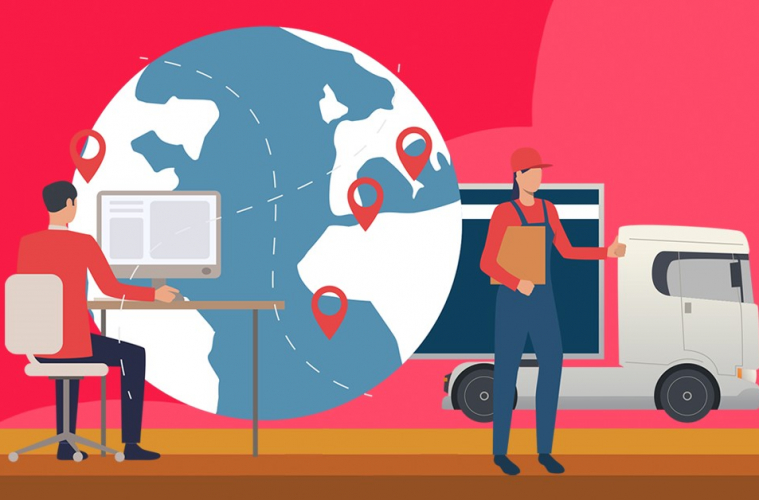WorldFirst partnered with Pinstripe Media and Kochies’s Business Builders to produce the below article.
Today’s small business owners operate in an increasingly global environment. Whether they are importing products from overseas or batching out work to international freelancers, the ability to pay for goods and services in local currency can save a business time and money.
Any small business owner that has had to pay an overseas supplier knows foreign exchange via the traditional banking sector can be costly. International payment systems were originally set up to cater for the big end of town and don’t have the needs of a small business in mind. These wire transfers incur incoming and outgoing fees and can be extremely costly for a small operator. If you are making regular payments to foreign suppliers, chances are you’re losing out on these cross-border exchanges. Plus, an international payment via SWIFT (Society for Worldwide Interbank Financial Telecommunication) code can take up to five days to complete and there is little security around the transaction. Get a detail wrong and you can kiss your funds goodbye. There has to be a better way? Right?
The hidden costs of international payments
Bank fees and margins can add a considerable cost to any international transaction. To really understand the price your business incurs for international payments you need to look at the fees you are paying, the margins in place and the time you waste waiting for payments or making payments. If you’re using one of the big four banks, chances are your international supplier payments are costing you a motza. Here’s why.
Banks make a margin on the exchange
When you hand over your cold hard cash to your bank and request them to make a foreign exchange the bank will charge a margin on that exchange. The margin is the difference between the market rate, or what your bank or provider buys the currency for, and the customer exchange rate you receive from your bank or money transfer provider. A bank can charge a margin of over 5%. This means your exchange rate will be 5% lower than what you see on the news or the RBA’s website. So, you’re already losing money even before you send the payment to your supplier.
Mark Lippman CEO of iconic luxury handbag store Olga Berg says switching to a money exchange platform has saved the brand time and money.
“I went with WorldFirst because it offers me a single, simple, cost-efficient multicurrency platform solution for making and receiving foreign currency payments. The platform allows me to see all my foreign currency accounts in the one place and to pay my suppliers from any of the currency accounts depending on where I have funds,” Lippman explains.
“One of the features I like is the ability to nominate the amount the receiver will receive in their currency which means that sometimes unknown intermediary bank or receiving bank charges are not an issue.”
WorldFirst offers transparent pricing 0.6% or less.
Banks charge transaction fees
Banks and money transfer suppliers often charge a set fee to make an overseas transaction. This fee can cost as much as $25 dependent on your provider, so finding a cheaper way to pay overseas suppliers can save your business money.
Elke Pascoe, founder of LittleOak– a homegrown organic baby formula made with Goat’s milk that has had enormous success overseas, knows the cost of managing international transactions. Speaking to Kochie’s Business Builders Pasco commented:
“The thing with a global business is you don’t want to bite off more than you can chew and you need to think carefully about that…
“We’re very fortunate now to have great finance team – and our partnership with WorldFirst who does all our transactions. In the beginning we did all our transactions through our banking partners and didn’t realise how much we were losing. But now we can confidently move money across the world.”
WorldFirst charges no fee on currency exchanges.
How can I start saving on international supplier payments?
By switching from a bank to a provider like WorldFirst, small business owners can speed up the process of paying overseas suppliers and lower the cost of the transaction at the same time. By signing up for a free WorldFirst account businesses get access to a fast secure payment system that allows them to make same-day payments in 30 different currencies. Paying a supplier is as simple as adding a supplier to your payee list, booking a transfer and sending WorldFirst the currency. They then make the payment in local currency and your supplier will generally receive the money in one business day.
Small business and personal finance expert David Koch says when it comes to paying overseas suppliers business owners should weigh their options.
“Money transfer services give you an option, away from the banks of getting the best deal. That’s what it’s all about. Competition. It’s not just about the fees. Check the margin they are using and the spread and watch out for traps from the banks. If you can get a better deal from a money transfer service it makes sense to use one.”
Disclaimer:
These comments are the views and opinions of the author and should not be construed as advice. You should act using your own information and judgement.
Whilst information has been obtained from and is based upon multiple sources the author believes to be reliable, we do not guarantee its accuracy and it may be incomplete or condensed.
All opinions and estimates constitute the author’s own judgement as of the date of the briefing and are subject to change without notice.
Please consider FX derivatives are high risk, provide volatile returns and do not guarantee profits.



